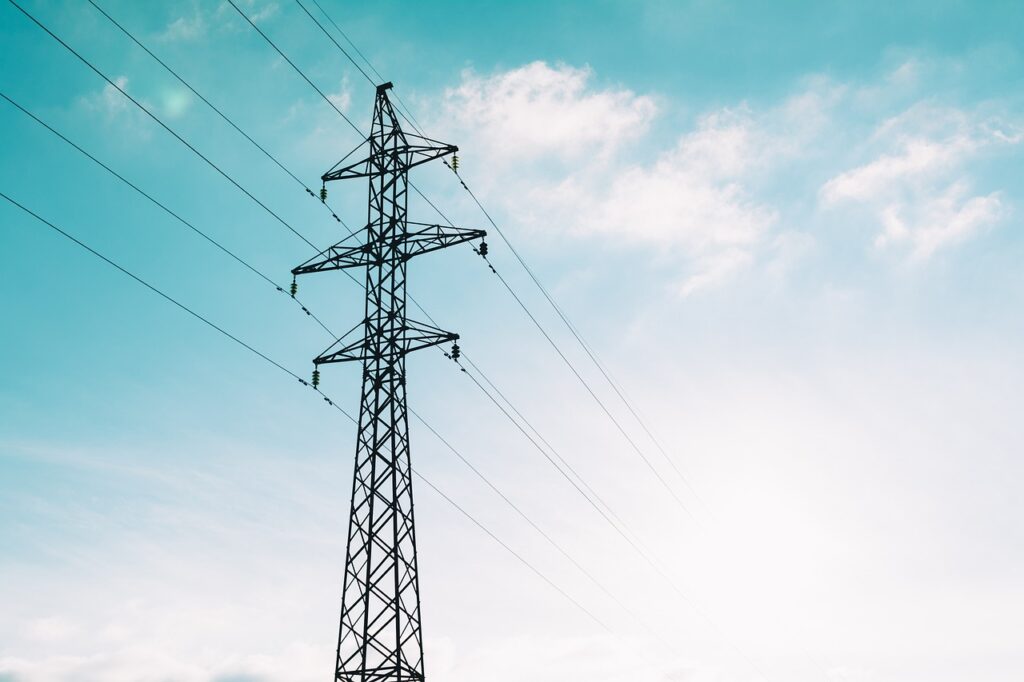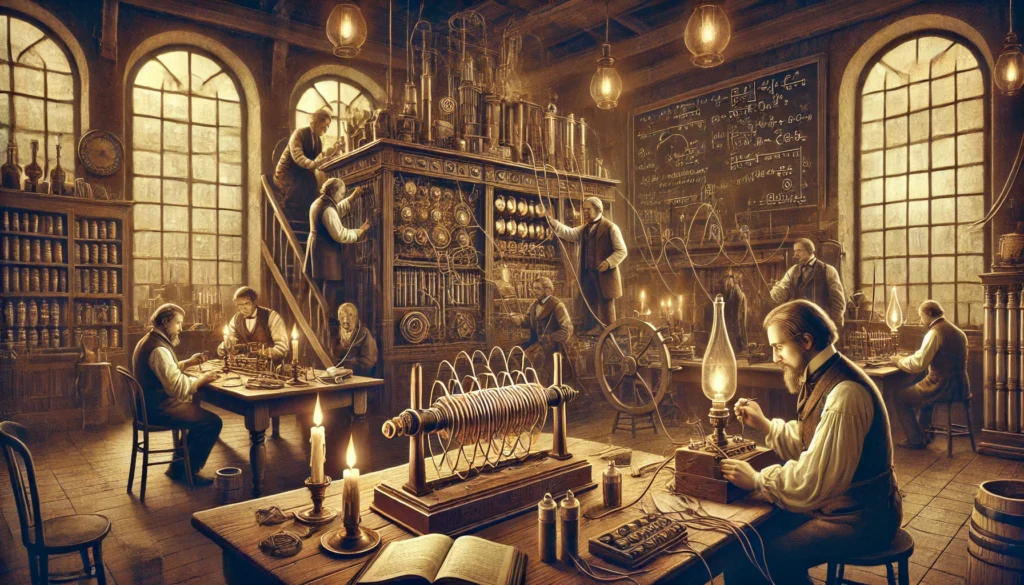Introduction:
Electricity is an integral part of modern life; it lights our homes and powers the global economy. But who invented electricity? The answer is not as simple as it seems, however, because electricity is not the invention of one person but the series of many discoveries made by scientists and thinkers over centuries.
This blog, will take you through the history of this marvelous phenomenon, who understood and developed it in current form, what do we owe these people for such discoveries and how is the world because of them.
What is Electricity?

Before we jump into the electricity timeline, it is first important to know what electricity actually is. Electricity is the flow of electric charge — defined as electricity in scientific terms. Electricity exists as two frozen: static electricity (the charge present on a surface) and current electricity (the mismatched charge flow in a conductor).
We use electricity in so many ways today: lighting, heating, communication, and powering devices, yet we have evolved to that understanding and harnessing point of fiction is much less advanced.
Early Observations of Electricity

The Greeks and Static Electricity
The history of electricity is counted in thousands of years; its first documented discovery was found already in ancient Greece. It was there that the philosopher Thales of Miletus, around 600 BC, noticed that after rubbing the amber with wool, this mineral began to attract light fluff of feathers, which is an extraction of static electricity. Greek amber in Latin is called succumb, that is why they named it Elektron; afterward, the word electricity went out of this Greek word. The Greeks did not know much about electricity and did not understand the general laws and interactions.
William Gilbert’s Studies
Move ahead to the late 1500s where William Gilbert, an English scientist was experimenting with magnetism. His most important work, “De Magnete,” was published in 1600; he separated magnetism from static electricity. Gilbert had used the word electricus to describe this force exerted by rubbed materials, and so paved the way for subsequent investigations of electricity.
This was a breakthrough piece of work — it began to shift electricity away from being something that philosophers pondered, to something which scientists studied.
The Age of Experimentation

Otto von Guericke and the Electrostatic Generator
German inventor Otto von Guericke developed an early primitive electrostatic generator well known in the 17th century when researching electricity. In it, Guericke could still create static electricity but by adding friction to the equation, it allowed for more reliable electrical discovery than previously.
This work opened the door for other scientists to perform larger electrical experiments, showing that electricity had the ability to create light and drive movement.
Stephen Gray’s Conduction Experiments
Above is a great summary of Stephen Gray, He was an English scientist who did research on the conduction of electricity in the early 18th century. Gray demonstrated that electricity flowed through certain materials (the ones we now call conductors) and did not flow through others (now called insulators). That broke open the understanding of how electrical currents work and can be controlled, which was essential to discover that.
Those experiments by Gray also paved the way for the development of electrical circuits and technology, however it yet out shone in really light when went to leading breakthroughs where discovered about electricity.
Benjamin Franklin and His Famous Kite Experiment
In the long history of electricity, one of its most infamous acts happened in 1752 with American polymath Benjamin Franklin’s kite experiment. Famous for flying a kite, with a metal key attached to it during a thunderstorm, demonstrating that lightning is electricity. It was a turning point because it proved that electricity could exist naturally and not solely as a lab experiment.
Franklin went on to invent the lightning rod, an early practical application of electricity for use in protecting buildings from being struck by lightning.
The Birth of Electromagnetism

Luigi Galvani and Animal Electricity
Animal electricity is one form of electricity that was discovered by the Italian scientist Luigi Galvani experimenting with frogs in the last quarter of the 18th century. Galvani noted that a frog’s leg twitched after being touched with a metal instrument which suggested to him that animal tissues contain intrinsic electrical forces.
While Galvani was wrong about his theory, he remained one of the first to further investigate the connection between electricity and living systems.
The First Battery: Alessandro Volta
Another scientist of his time, Alessandro Volta, was opposed to the idea of animal electricity as proposed by Galvani and aimed to demonstrate that the electric current originated from metal pairs in contact with each other. From Volta’s work came the voltaic pile, its invention in 1800 marked the world first genuine battery. The voltaic pile that he invented had thin layers of zinc and copper interspersed with damp cardboard which produces a steady stream of electricity.
The battery that Volta invented came as a gigantic step ahead, because it gave experiments and applications an ongoing supply of energy. One of the units of electric potential, the volt, is named after him.
Electromagnetism | Hans Christian Ørsted
The foundation for electromagnetism was established when a Danish physicist called Hans Christian Ørsted found the relationship between electricity and magnetism in 1820. Ørsted discovered that a compass needle is displaced when electricity flows in a nearby wire, which means electric current can produce fields around them. To understand the relationship between electricity and magnetism — which others scientists would later build upon casi inextricably linked — was this discovery.
The Electromagnetic Revolution

Electromagnetic induction is attributed to Michael Faraday.
Michael Faraday, the English scientist responsible for major discoveries in the early 1800s, is perhaps one of the most significant characters in electricity history. This is how Faraday discovered the process of electromagnetic induction—that is, creating a current from a changing magnetic field.
Faraday eventually gave rise to the first electric generator, which transforms mechanical energy into electrical energy. They laid the foundation of our electrical grid and power generation systems. He is also the eponym of the farad, a unit of electrical capacitance.
James Clerk Maxwell’s Equations
Scottish physicist James Clerk Maxwell, expanding on Faraday’s efforts, developed a series of mathematical equations that illustrate the connections between electricity and magnetism. In the 1860s, these four equations, known as Maxwell’s Equations, unified electricity, magnetism, and light into a single theory that demonstrated they were all just various forms of the same underlying force: electromagnetism.
The theoretical groundwork for much of contemporary physics, starting from the study of the electromagnetic wave itself, was laid down by Maxwell.
The War of the Currents

Thomas Edison and Direct Current
By the end of the 19th century, electrical applications were proliferating. In the late 19th century, Thomas Edison (one of the most popular inventors) created a solution for the generation and distribution of direct current electricity. The DC system devised by Edison fed the original electric lighting and was used in nearly all early power grids.
Yet, there were limitations to such a system as Edison’s. The problem with it, of course, was that DC wasn’t really that easy to transmit over distance, and so a war between Edison and another future visionary inventor kicked off: Nikola Tesla.
Nikola Tesla and Alternating Current
The scientific rivalry between Thomas Edison and Nikola Tesla, the Serbian-American inventor who idealized alternating current (AC) as a better means of transmitting electricity over long distances, is on full display in Los Angeles currently. The AC current could be increased or decreased in voltage through transformers, making it the perfect choice for large-scale power delivery.
Industrialist George Westinghouse also supported Tesla’s AC system, and both beat Edison in the “War of the Currents.” Currently, it is the AC that practically transmits most of the electrical power in the world.
His contributions to electricity are well-known, and his grand vision paved the way for everything from wireless communication systems to electric motors.
Modern Contributions to Electrical Science

Heinrich Hertz and Electromagnetic Waves
Based on this theory, electromagnetic waves were experimentally demonstrated to exist in the late 19th century (the first being by Heinrich Hertz based on Maxwell’s equations). The electricity that Hertz used for his experiments was later found to emit radio waves that were subsequently harnessed for communication technologies such as radio, television and mobile telephony.
He has given his name to the unit of frequency, the hertz.
Albert Einstein’s Theories on Light and Energy
Albert Einstein Perceived the Transformation of Electricity through Energy in The Beginning Phase of 20th Century These included his work — with the photoelectric effect, which demonstrated that light could be conceived as packets of energy known as photons and helped give rise to quantum theory. The implications of Einstein’s work, which won him the Nobel Prize in 1921, were profound and made an enormous impact on electricity and energy.
The insights Einstein brought to bear on how light, electricity, and energy behave in the workings of the atom have enabled technology from solar cells to lasers.
Conclusion: Electricity as a Collaborative Invention
In case, you did not get the point, electricity is never originated by a single person. The response is centuries of experience and guess work by some very smart people. Electricity, from the first ancients observing it in nature to groundbreaking work by Faraday, Tesla and Einstein has a long history of being influenced energetically by many scientists over time.
From Franklin’s lightning experiments to Volta’s invention of the battery, and even Maxwell’s unifying equations, each contribution has added to our understanding of electricity. Some of these advances have not only altered the fields in which they occurred but the face of modern life itself, shaping everything from communication to domestic power.
